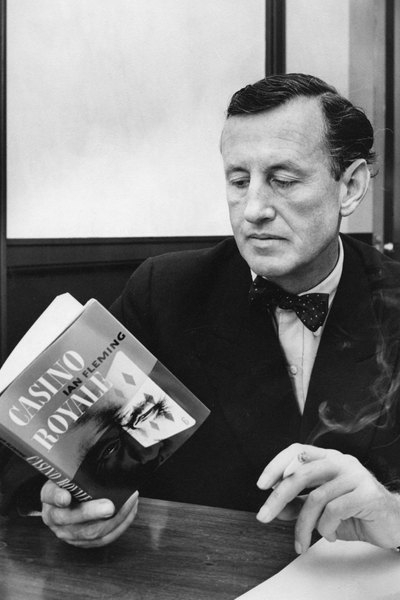
by Gideon Marcus
Every animal needs a safe place. A refuge from the violence and competition of the natural world in which to evade danger, to regather one's strength in security. The groundhog and the sand crab burrow. The gazelle seeks the center of its herd. The cat finds a private place to devour its prey (often just outside your back door).
Humanity, too, needs its sanctuaries. We've built castles and moats, erected Great Walls, forged mighty nations defended by vast militaries. Humans also create spiritual refuges, places that couldn't resist the mildest physical attack, but nevertheless provide an island of calm in which we can find shelter from chaos. Churches. Temples. Libraries.
On the morning of Sunday, September 15, 1963, one of those sanctuaries was violated: someone, or several someones, planted dynamite in the 16th Street Baptist Church in Birmingham, Alabama. It went off during services, killing four girls (Addie Mae Collins, Cynthia Wesley, Carole Robertson and Carol Denise McNair) and injuring 22 more.

It is unknown who is responsible, but the motivation is clear, for the victims share a trait beyond their humanity and their gender — they are Black. And there is an evil set of Birminghamians, undoubtedly White, who would deprive their neighbors even of the dignity of refuge. It is terrorism, plain and simple.
I heard the news of the bombing in the same manner as most of you, I'm sure. There was a special bulletin over the radio. At first, the significance of the event was difficult to parse. The South has been wracked with violence for years, ever since Blacks dared to challenge the social order and demand the equality that should be their unquestioned right. Firehoses, police dogs, stonings, lynchings, assassinations — these attacks have become all too commonplace.
But this latest hideous act involved the mass slaughter of children, in the one place they should have been expected to have been safe. I'm certain its perpetrators felt it would be some kind of rallying call for White racists to resist the tide of integration. If public reaction be any indication, it will have the opposite effect. This nation, already moving toward championing the cause of equality, already committed to deploying soldiers to ensure the civil rights of Black students, can only be spurred with greater urgency to destroy segregation and bigotry before it claims as victims more children, more sanctuaries.

That's the view from 50,000 feet. On Sunday morning, I was incapable of analysis or even hope. All I could think about was the horror that had happened, and the families who'd lost their little girls. One of the dead was the same age as our Young Traveler. I wasn't ready to process the tragedy. I needed my own place of refuge, a moment of peace to collect myself.
So I shut out the world and picked up a book.

The visions of other worlds afforded by the "All Star" October 1963 Fantasy and Science Fiction might not turn out to be pleasant, but they would at least let me visit different ones.
As it turned out, the excursion was just what I needed. This month's issue is a good one:
Girl of My Dreams, by Richard Matheson
The first tale was, for me, a bit of "out of the frying pan and into the fire." It's a thoroughly unpleasant tale about a thoroughly unpleasant fellow who marries a possessor of the second sight. Said wife sees the catastrophes that will befall others in her nightmares, and her scoundrel husband then uses this knowledge to fleece the upcoming victims. Having a conscience, the clairvoyant sabotages one of her husband's plans on the eve of success. It is only after he batters her to death for her trouble that he learns that she has foreseen his death and no longer can tell him how to avoid it.
Matheson never writes poorly, but the Twilight Zone twist combined with the rampant domestic cruelty (never lauded, mind you) make this a story you may well want to skip. Three stars.
Epistle To Be Left In The Earth, by Archibald MacLeish
The low point of the magazine is another "Tell those who come after us that Earth was once a lovely place" poem. It don't even rhyme. One star.
Deluge, by Zenna Henderson
(poetic sting by Jeanette Nichols)
Now we come to the part I was most looking forward to, the return of Zenna Henderson's The People. This episode of the saga is chronologically the first, showing what caused a family of humanoid espers to depart from Home and take refuge in the ruralities of America.
Henderson's stories are always poignant, emotionally laden pieces. The problem with this one is there is no real dramatic tension. Like a movie about the Titanic, we know how it's going to end from the start. Moreover, it lacks that delicious tension implicit in the stories set on Earth: the worry of discovery, the friction with locals, the adaptation to a new environment.
Deluge is thus a series of evocative, poetic scenes in an inexorable and rather dull narrative, a piece that would have been better left unwritten, or perhaps simply incorporated in other stories. Three stars.
(Since we've now gotten the beginning and the (also lackluster) end of the series, one wonders if it's time for Henderson to move on to other subjects. On the other hand, an official meeting between The People and the people of Earth would be nifty to read.)
Faed-Out, by Avram Davidson

Followers of this column know that I was once a big fan of Davidson's work but feel his latest stuff has been too somber, incomprehensible, or both. Faed-Out is a return to form, about a veteran B-movie villain with a heart of gold, who helps bring to rest the soul of a departed fellow thespian.
This workmanlike plot is elevated by being a wonderful character piece brought to poignant conclusion in its last paragraph. Four stars, and welcome back, sir.
How to Plan a Fauna, by L. Sprague de Camp

De Camp has been a writing fiend, lately. This time around, he points out the typical flaws in science fiction ecologies and gives a broad, if cursory, account of terrestrial predator/prey ratios to be applied to other planets to make convincing faunas.
It's a bit of an argument with a strawman — the examples De Camp draw on are Burroughs and other pulpish folk; truly outdated stuff. Plus, the survey of Earth's food chains is rather glib and superficial. Three stars, and I'd rather see the Good Doctor Asimov's take on the subject.
Special Consent, by P. M. Hubbard
Hubbard returns with a tale as different from his pleasant Cornish ghost storyThe Golden Brick as he could get. Consent tells of a post-atomic world in which women are ascendant and the gender balance is strictly enforced by law. Would-be mother of a daughter, Madi, must obtain special consent from her husband — by force, if necessary — for the birth.
It's a strange story, and very opaquely written, but it does make you think. Three stars.
Twinkle, Twinkle, Little Star, by Isaac Asimov
I see Editor Davidson has given up on preambling Asimov's articles, now letting Isaac do the honors. This development is to the good. The current month's article is (appropriately) about stars, and it puts paid the notion that our yellow dwarf sun is at all insignificant. When compared to the red dwarfs that make up the majority of the stellar population, our star looks quite impressive.

It's a good piece, and the bits about sub-stellar objects (stars too small to shine — he calls them "black dwarves") are fascinating, but I was disappointed that he went through all the trouble to tell us about white dwarfs, incredibly dense objects with the mass of a star but the volume of a planet, but didn't bother to explain what they are. If you don't know already, white dwarfs are the end result of stellar evolution. Once a star has fused all of its hydrogen, it collapses in on itself, becoming composed entirely of squashed neutrons with shared electron shells.
Four stars that really should have been five.
They Don't Make Life Like They Used To, by Alfred Bester
Last up is the tale I read first, a Garden of Eden analogy set in post-apocalyptic New York. Call it The World, The Flesh, and the Devil, but instead of Mel Ferrer, you've got aliens. And Harry Belafonte's White.
Actually, it's quite good, which surprised me since I've got a long-running animosity toward Alfred Bester. You may be off-put by the assiduous adherence to gender roles in the piece, although I got the impression that the two protagonists were playing up these clichés rather than falling into them unconsciously. I particularly appreciated the complete absence of romance between the characters throughout the vast majority of the piece.
Detractors: At the conclusion, aliens shatter the post-atomic Eden, and the protagonists commence to screw. Though I get what Bester was doing, it cheapened the story for me. The worst bit of the piece, however, comes right at the beginning: The female protagonist is driving to get supplies (in a masterfully told set up that only gradually reveals the post-apocalyptic setting), and it is noted that "her bosom danced enchantingly." Since the only viewpoint is the owner of the bosom, one has to wonder just who was watching. Did she notice the enchanting movement herself? Isn't it unsafe to admire one's jiggling while operating a vehicle?
Anyway, it kept my interest and, for the most part, I liked it. Four stars.

I put down the magazine and take a deep breath. It is September 17th, and I find myself able to once again acknowledge and take on the world's strife. If you are need of some solace from the storm, try finding it where I found mine: within the pages of this month's F&SF.

![[September 17, 1963] Places of refuge (October 1963 <i>Fantasy and Science Fiction</i>)](https://i0.wp.com/galacticjourney.org/wordpress/wp-content/uploads/2018/09/630917cover.jpg?resize=672%2C372)

![[September 15, 1963] <i>The Silent Star</i>: A cinematic extravaganza from beyond the Iron Curtain](https://i0.wp.com/galacticjourney.org/wordpress/wp-content/uploads/2018/09/630915German_poster.jpg?resize=672%2C372)














![[September 13, 1963] COMING UP FOR AIR (the October 1963 <i>Amazing</i>)](https://i0.wp.com/galacticjourney.org/wordpress/wp-content/uploads/2018/09/630913cover.jpg?resize=672%2C372)









![[September 11, 1963] Has Marvel Comics become Mighty?](https://i0.wp.com/galacticjourney.org/wordpress/wp-content/uploads/2018/09/630911ff21-cover.jpg?resize=672%2C372)








![[September 9, 1963] Great Expectations (October 1963 <i>Galaxy</i>)](https://i0.wp.com/galacticjourney.org/wordpress/wp-content/uploads/2018/09/630909cover.jpg?resize=444%2C372)









![[September 7, 1963] Druids at College: An Old Religion for a New Era](https://i0.wp.com/galacticjourney.org/wordpress/wp-content/uploads/2018/09/630907druids.jpg?resize=672%2C372)



![[September 5, 1963] Oh Brave New World (the 1963 Worldcon)](https://i0.wp.com/galacticjourney.org/wordpress/wp-content/uploads/2018/09/630902gj.jpg?resize=640%2C372)











![[September 3, 1963] An unspoken Bond (Ian Fleming's <i>On Her Majesty’s Secret Service</i>)](https://i0.wp.com/galacticjourney.org/wordpress/wp-content/uploads/2018/09/630902OHMSS-cover.jpg?resize=252%2C372)





![[Sep. 1, 1963] How to Fail at Writing by not Really Trying (September 1963 <i>Analog</i>)](https://i0.wp.com/galacticjourney.org/wordpress/wp-content/uploads/2018/09/630831cover.jpg?resize=672%2C372)









![[August 29, 1963] Why we fly (August Space Round-up)](https://i0.wp.com/galacticjourney.org/wordpress/wp-content/uploads/2018/08/630829astronauts.jpg?resize=672%2C372)









